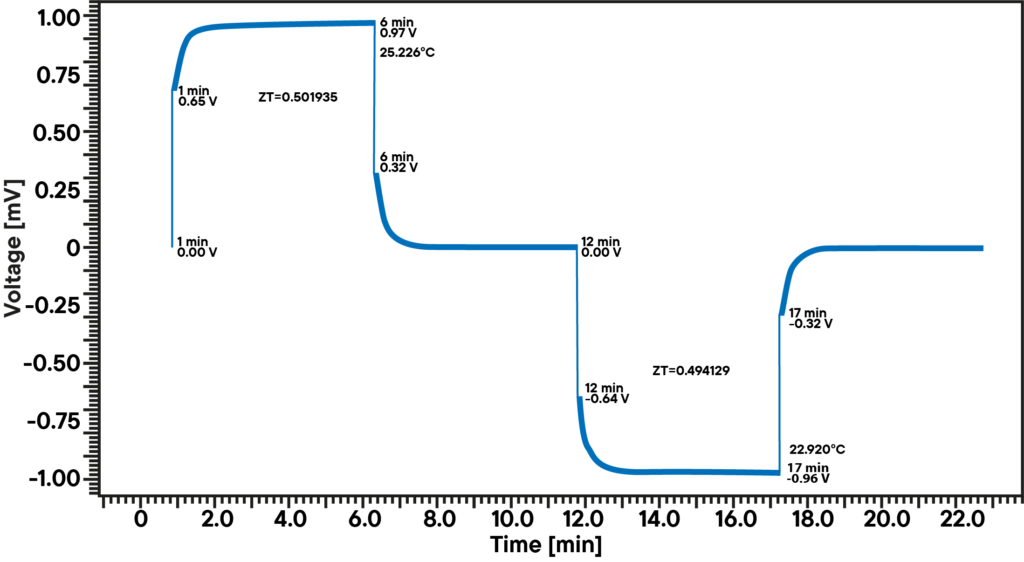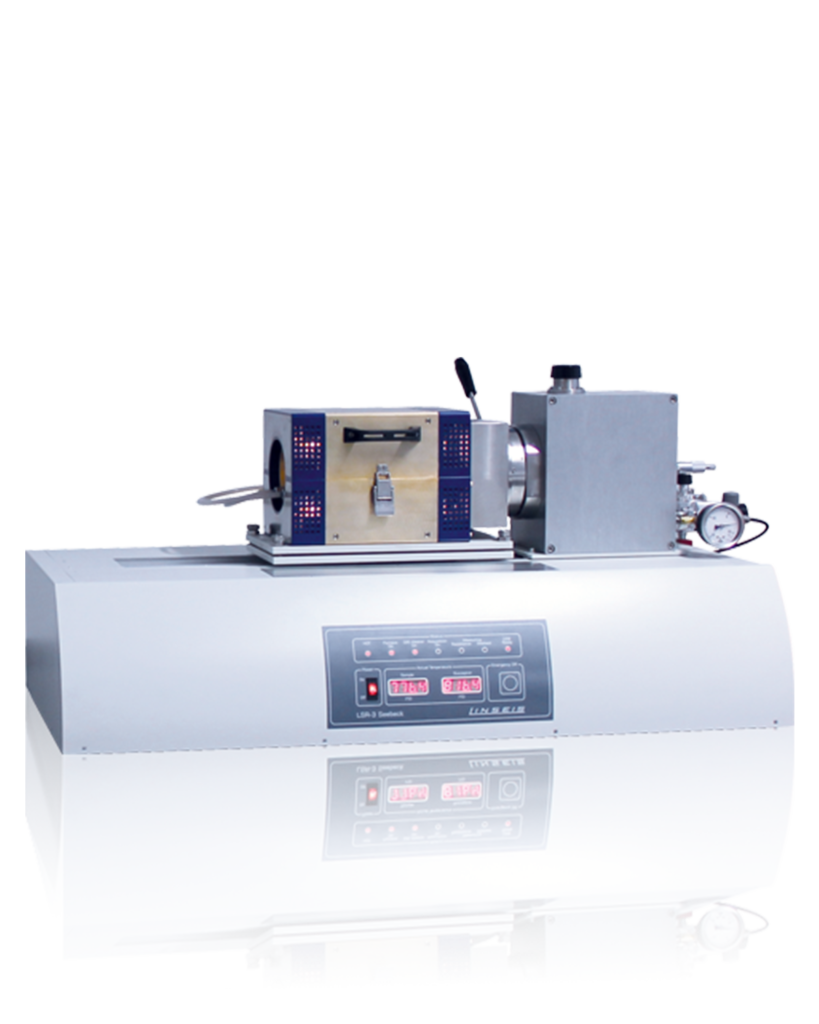The figure of merit ZT describes the performance of a thermoelectric material. Normally ZT is calculated from the thermal and electric conductivity and the Seebeck coefficient. These three properties are measured seperately each measurement having a certain error.
The Harman method allows to measure ZT directly in only one measurement: the voltage measured applying a current on a thermoelectric material has two contributions: the ohmic drop and the thermo-voltage. Dividing one by the other gives ZT.

The NIST (SRM 3451)™ Bi2Te3 Bismuth telluride reference material has been analyzed using the Harman method in combination with our LINSEIS LSR platform. The measurement clearly shows the typical voltage distribution at a single temperature measurement point. In this case, the ZT “figure of merit” value at room temperature can be simply calculated by setting the ohmic voltage drop and the thermoelectric voltage drop in relation. ZT was found to be 0.50 at room temperature.

